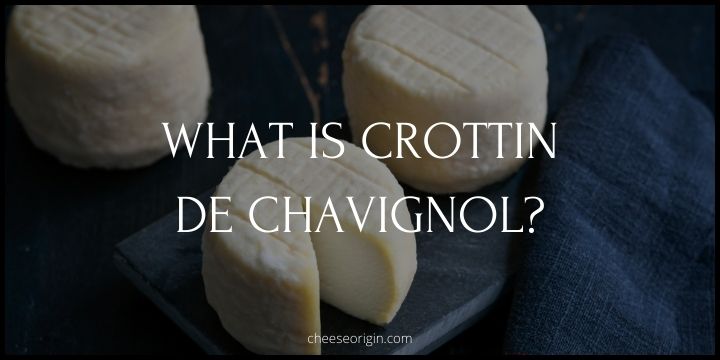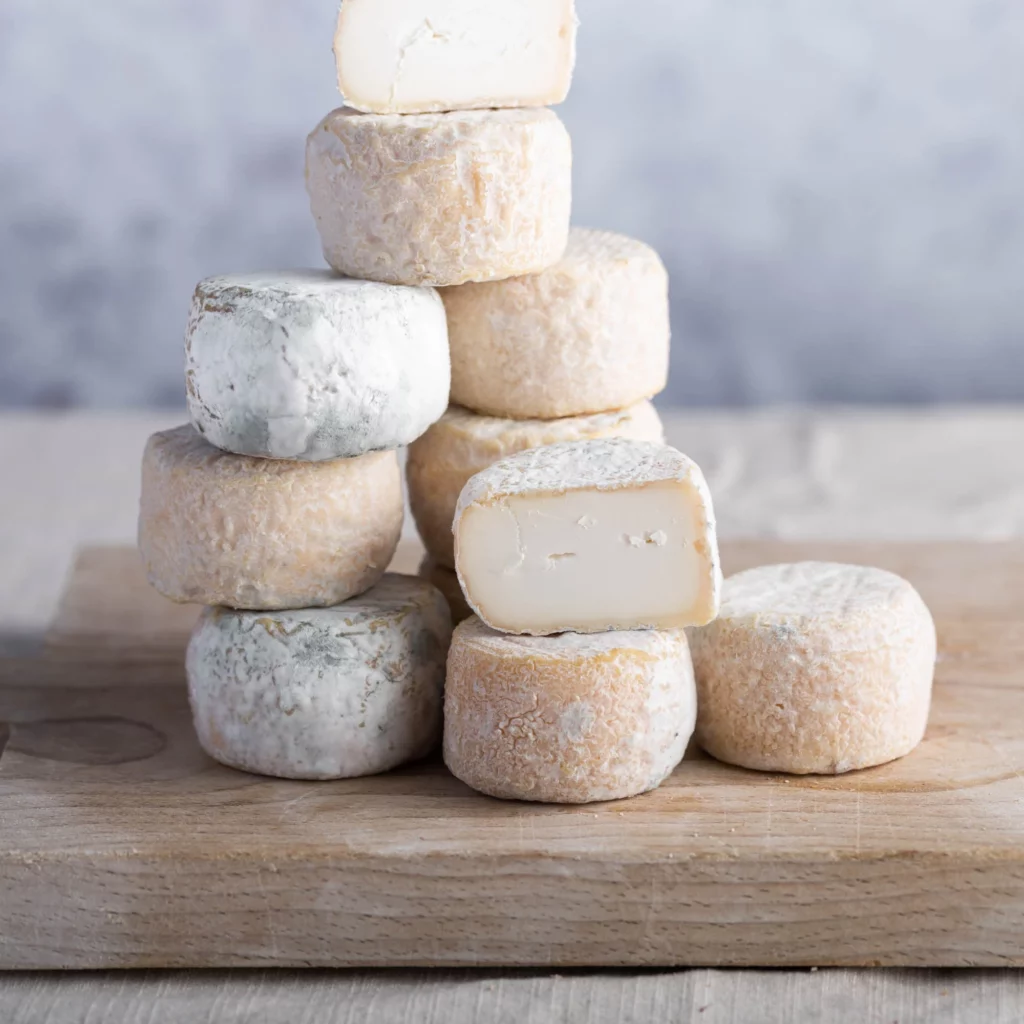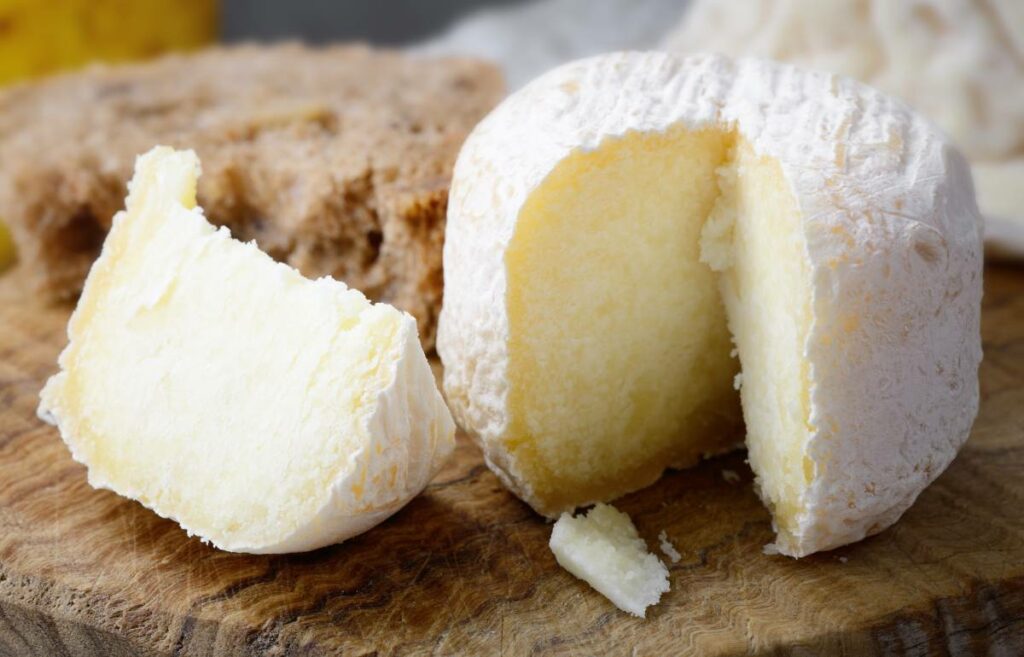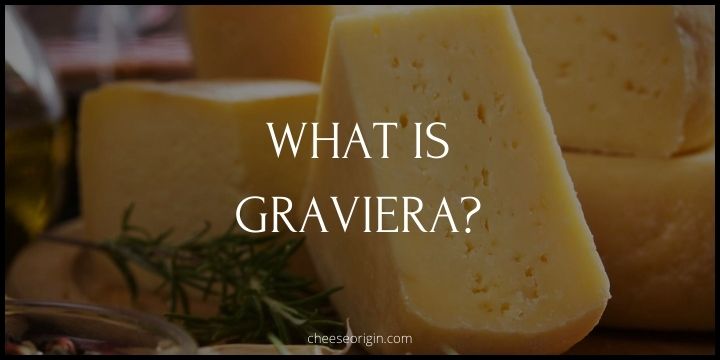What is Crottin de Chavignol? The Jewel of the Loire Valley

Today, we’re going to delve into the world of artisanal cheese, specifically, one that hails from the picturesque Loire Valley. This region, renowned for its chateaus and vineyards, is also celebrated as a culinary treasure that has been delighting palates for centuries: Crottin de Chavignol.
This humble yet majestic cheese, often referred to as the ‘Jewel of the Loire Valley’, is more than just a dairy product; it’s a testament to tradition, a tribute to the art of cheesemaking, and an emblem of the region’s rich gastronomic heritage.
Quick Facts About Crottin de Chavignol
| Quick Facts | Description |
|---|---|
| Country of Origin | France |
| Region | Loire Valley, specifically the village of Chavignol |
| Type | Goat’s milk cheese |
| Texture | When young, it’s creamy and soft. As it ages, it becomes firmer and crumbly. |
| Flavor | The flavor profile changes with age. Young cheese is mild and nutty, while mature cheese has a more intense and complex flavor. |
| Color | Ranges from white to golden depending on the age |
| Shape | Small cylindrical ‘buttons’ |
| Rind | Natural, edible rind that darkens with age |
| Aging Time | Minimum of 4 weeks, but can be aged up to several months |
| Pairing | Pairs well with Sancerre wine from the same region |
| Appellation | It’s one of the few goat cheeses to have received the AOC 1976 (Appellation d’Origine Contrôlée) and AOP 1996 (Protected Designation of Origin) status |
| Serving Suggestions | Can be enjoyed at various stages of maturity, either on its own, with bread, or melted on top of a salad. |
| Availability | Available all year round, but best between April and September when the goats are grazing fresh grass |
What is Crottin de Chavignol?

Crottin de Chavignol is a fascinating cheese that hails from the charming village of Chavignol in France’s Loire Valley. This small, cylindrical cheese is made from the milk of Alpine goats, which lends it a distinct flavor and texture that sets it apart in the world of cheeses.
What’s particularly intriguing about Crottin de Chavignol is its transformative nature. When young, its rind is light and its interior is creamy and soft with a slightly nutty flavor. As it ages, the rind darkens, and the cheese becomes firmer and crumbly, developing a more intense and complex flavor profile. This aging process allows you to enjoy the cheese in different stages of maturity, each offering a unique gastronomic experience.
Crottin de Chavignol holds both AOP (Appellation d’Origine Protégée) and AOC (Appellation d’Origine Contrôlée) status, which are European and French recognitions of authenticity and quality respectively. These certifications ensure that the cheese adheres to stringent standards related to its production process, geographical origin, and quality.
The cheese pairs excellently with Sancerre wine from the same region, creating a perfect harmony of flavors. Whether enjoyed on its own, with bread, or melted atop a salad, Crottin de Chavignol offers a delightful taste of France’s rich culinary heritage.
Interestingly, the name ‘Crottin’ is derived from an old French term for oil lamp, referring to the cheese’s shape and size, while ‘Chavignol’ pays homage to its place of origin. Today, Crottin de Chavignol continues to be celebrated globally for its quality and versatility, truly embodying the spirit of French gastronomy.
What Does Crottin de Chavignol Taste Like?
Crottin de Chavignol offers a delightful taste experience that varies with its age. When fresh, the cheese is off-white and creamy inside, with a mild goaty flavor. It’s often enjoyed clothed in fine herbs during this stage, offering a creamy, nutty taste.
As the cheese starts to ripen, it undergoes a transformation. The rind develops and the interior becomes more firm. Young versions of the cheese, known as Chavignol jeune, have a slightly nutty taste while the dough is still compact and the rind white.
The cheese undergoes further changes as it ages. Crottin de Chavignol is generally aged for 4 weeks or more. During this time, the cheese becomes drier and more crumbly, presenting a different texture and flavor profile. The true flavor of the cheese shines when the rind is consumed together with the cheese body.
In some cases, the cheeses can exhibit a slight acidity, a very buttery mouthfeel, and notes of pepper and meal. There might also be a hint of ammonia, which is typical for aged cheeses.
Overall, Crottin de Chavignol provides a complex, evolving taste experience that cheese lovers will find fascinating and enjoyable.
Crottin de Chavignol Tasting Notes

- Appearance: In its early stages, Crottin de Chavignol is small, cylindrical, and creamy white in color with a smooth rind. As it matures, the rind transitions from straw-colored to a dark, rustic brown, becoming increasingly textured and wrinkled.
- Texture: The cheese’s texture evolves as it ages. Initially, it is soft, creamy, and slightly moist, providing a delightful melt-in-your-mouth experience. With age, it becomes firmer and more crumbly, offering a different tactile sensation.
- Aroma: Fresh Crottin de Chavignol gives off a subtle, slightly goaty aroma. As it matures, the smell intensifies, exhibiting a pungent yet pleasing scent that is characteristic of aged cheeses.
- Flavor: Young Crottin de Chavignol tastes mild and slightly nutty. As it ripens, the flavor deepens, becoming more complex. It may develop a buttery mouthfeel with hints of pepper and meal, and possibly a touch of acidity. The rind adds an additional layer of flavor and should be eaten alongside the cheese body.
- Aftertaste: The aftertaste of Crottin de Chavignol lingers pleasantly, leaving a lasting impression of its complex flavors. Depending on the age of the cheese, the aftertaste can range from subtly sweet and nutty in younger cheeses to more robust and tangy in older ones.
- Pairings: Crottin de Chavignol pairs exceptionally well with Sancerre wine from the same region, creating a perfect harmony of flavors. It can also be enjoyed with crusty bread, fresh fruits, or atop a warm salad.
How to Eat Crottin de Chavignol?

| Age of Crottin de Chavignol | How to Eat | Pairings |
|---|---|---|
| Fresh or Young | Spread on crusty bread or paired with fresh fruits like apples or pears. It can also be used to add a creamy, savory element to light salads. | Light, crisp wines like Sauvignon Blanc or a refreshing cider. |
| Semi-aged | Can be sliced and served on a rustic cheese board with charcuterie, olives, and pickles. Also delicious melted on toast or used in cooking, in dishes like tarts or quiches. | Fuller-bodied white wines like Chardonnay or light reds like Pinot Noir. |
| Fully Aged | Traditionally grilled or baked and served atop a green salad with vinaigrette dressing. The warmth from the cheese slightly wilts the greens, creating a delightful contrast in textures. | Robust, acidic wines like Sancerre or Pouilly-Fumé to balance the rich flavors of the cheese. |
Remember, regardless of its age, Crottin de Chavignol is best served at room temperature, so take it out of the fridge about an hour before serving to allow its flavors to fully develop.
Also read: Best Wine and Cheese Pairings: The Ultimate Guide
How is Crottin de Chavignol made?
- Milking: The process begins with milking goats, typically of the Alpine or Saanen breeds. The milk used in authentic Crottin de Chavignol must be raw and come from goats raised in the specified region of the Loire Valley.
- Coagulation: The fresh, raw goat milk is then gently warmed and mixed with rennet, a natural enzyme that causes the milk to coagulate and form curds.
- Cutting and Draining: The curds are cut into small pieces to help release the whey. They are then placed in molds and allowed to drain naturally, without being pressed.
- Salting: Once the curds have drained and solidified into the familiar small, cylindrical shape, they are removed from the molds and salted. This helps to develop flavor and acts as a preservative.
- Aging: The cheeses are then aged in a controlled environment. During this time, they develop a bloomy rind and their flavors deepen. The aging process can range from a few weeks to several months, depending on the desired level of maturity.
- Maturing: As the cheese matures, it shrinks and hardens, its rind darkens from white to golden to blue-gray, and its pate becomes denser and more intense in flavor.
Throughout this process, each batch of Crottin de Chavignol receives careful attention from skilled cheesemakers, ensuring that the final product lives up to its name as one of France’s most beloved cheeses.
10 Best Crottin de Chavignol Substitues
| Substitute | Characteristics |
|---|---|
| Boursin | Mild flavor, less pungent than goat cheese. |
| Queso Fresco | Fresh, mild flavor and crumbly texture. |
| Feta Cheese | Crumbly, tangy, and salty. |
| Selles-sur-Cher | French goat cheese with a distinctive gray-blue mold rind. |
| Chevre | Soft and creamy French goat cheese. |
| Cottage Cheese | Mild flavor, soft and creamy texture. |
| Halloumi | Firm, briny cheese that holds its shape when cooked. |
| Cream Cheese | Soft, mild-tasting cheese with a high-fat content. |
| Mascarpone | Italian cheese that’s creamy and slightly sweet. |
| Tofu | Non-dairy alternative with a mild flavor and firm texture. |
Frequently Asked Questions
1. Can you eat Crottin de Chavignol mold?
Yes, the mold on Crottin de Chavignol is edible. The rind of this cheese is naturally formed during the aging process and develops from the mold. It is safe to eat and contributes to the overall flavor profile of the cheese. However, some people choose to remove it due to personal taste preferences. Always ensure that the mold coloration and smell are consistent with what is expected for Crottin de Chavignol – white to blue-gray in color and a strong but not unpleasant odor. If the cheese has any other colors of mold (like black or bright red), or an off smell, it may be spoiled and should not be consumed.
2. What is Crottin de Chavignol in english?
“Crottin de Chavignol” is a French term and doesn’t have a direct translation in English. However, it can be described as “a type of cheese from the village of Chavignol in France”. “Crottin” in this context refers to the small cylindrical shape of the cheese, but it’s also a colloquial term for animal droppings, referencing the cheese’s rustic, unrefined appearance. “Chavignol” is the name of the village where this cheese originated.
3. How to pronounce Crottin de Chavignol?
“Crottin de Chavignol” is pronounced in French as “Kroh-teen deh Sha-vee-nyol”. Here’s a breakdown:
- “Crottin”: The “o” is pronounced like the “o” in “hot”, the “tt” is pronounced like the “t” in “tea”, and the “in” is pronounced like the “een” in “teen” but nasalized.
- “de”: This is pronounced like the “de” in “deal”, but with a softer “e”.
- “Chavignol”: The “Cha” is pronounced like “sha” in “shampoo”, the “vi” is pronounced like “vee” in “veer”, and the “gnol” is pronounced like “nyol” in “nylon”.
Also read:
- What is Stracchino (Crescenza)? The Creamy Treasure of Northern Italy
- What is Chabichou du Poitou? The Zesty, Grassy Cheese of France
- What is Fourme de Montbrison? The Gentle Blue From Southern France
- What is Laguiole Cheese? An Iconic French Delicacy
- What is Maroilles? A Taste of French Heritage
- What is Saint Nectaire? A Taste of the Auvergne Region’s Volcanic Pastures
- What is Tome des Bauges? The Art of Artisanal Cheese





